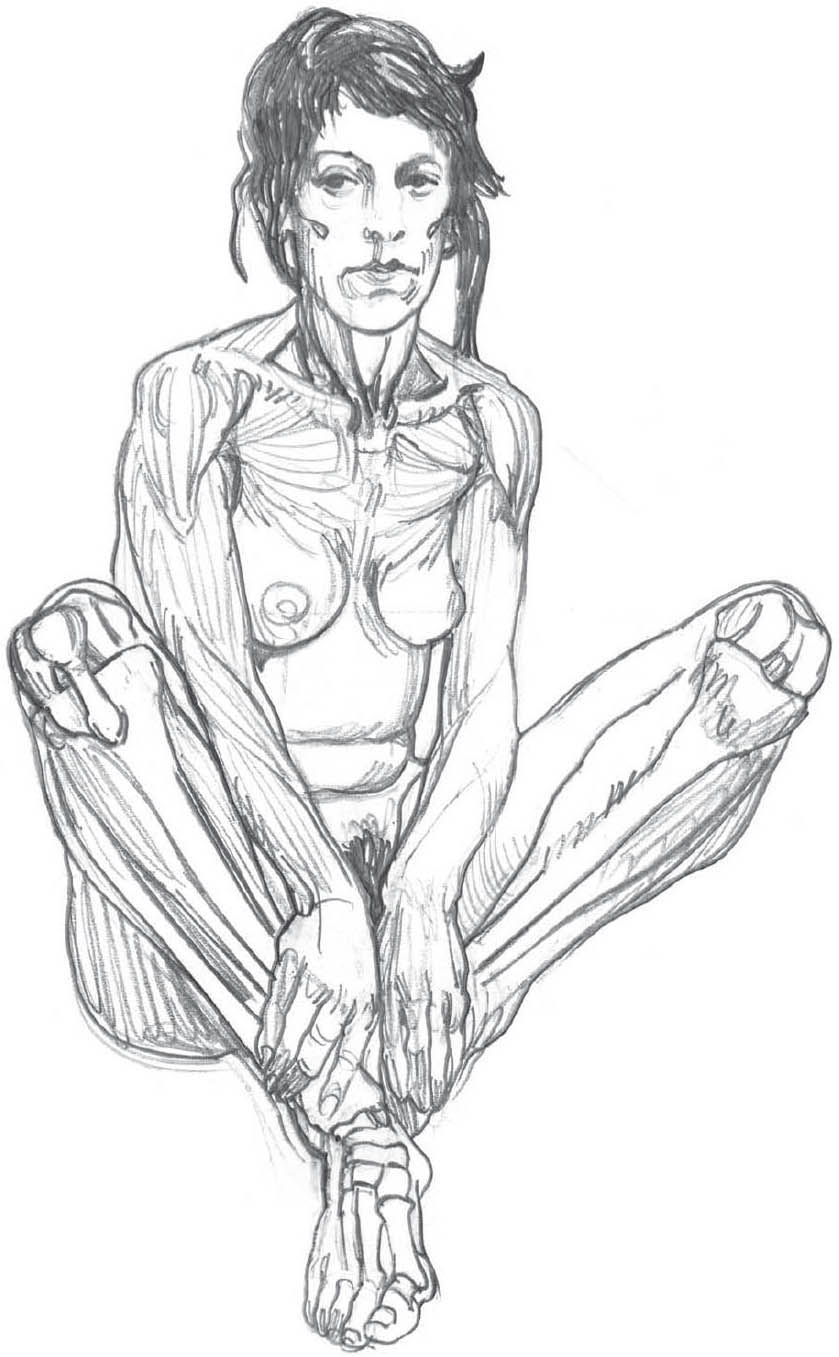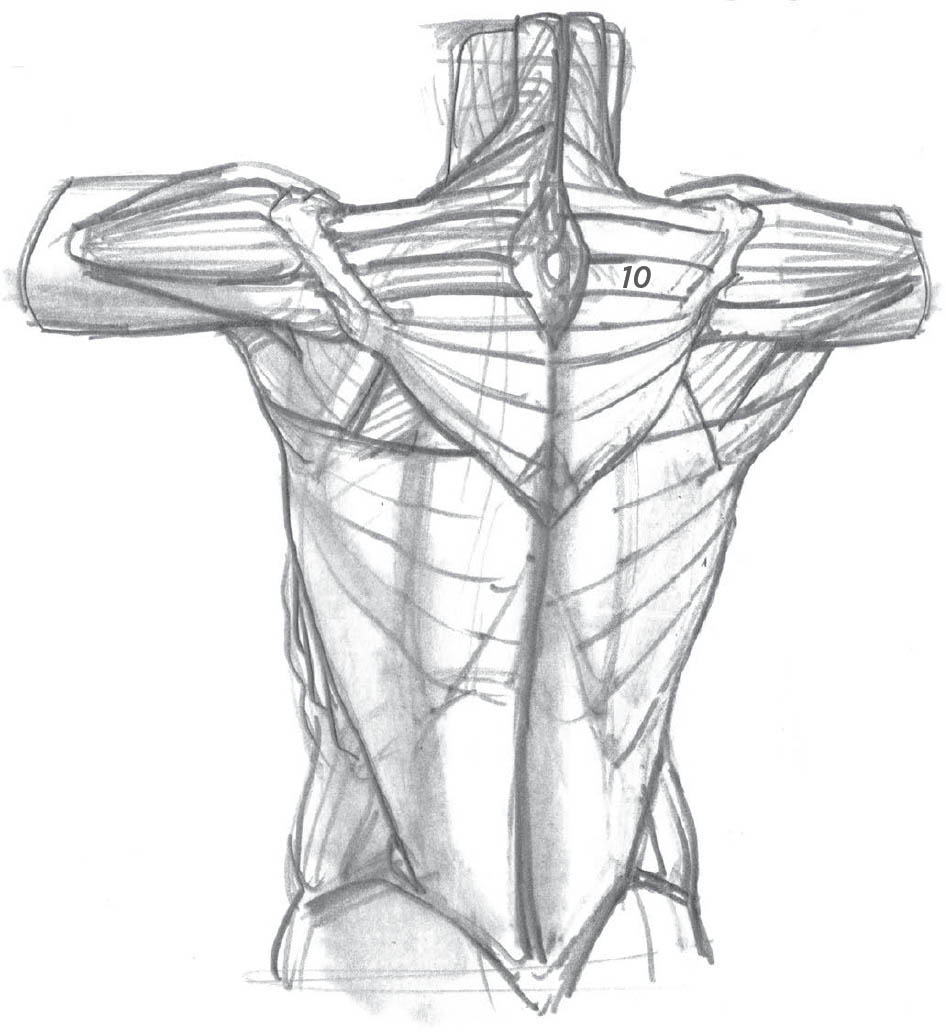Michel Lauricella - Morpho: Anatomy for Artists
Here you can read online Michel Lauricella - Morpho: Anatomy for Artists full text of the book (entire story) in english for free. Download pdf and epub, get meaning, cover and reviews about this ebook. City: La Vergne, year: 2018, publisher: Rocky Nook, genre: Romance novel. Description of the work, (preface) as well as reviews are available. Best literature library LitArk.com created for fans of good reading and offers a wide selection of genres:
Romance novel
Science fiction
Adventure
Detective
Science
History
Home and family
Prose
Art
Politics
Computer
Non-fiction
Religion
Business
Children
Humor
Choose a favorite category and find really read worthwhile books. Enjoy immersion in the world of imagination, feel the emotions of the characters or learn something new for yourself, make an fascinating discovery.
- Book:Morpho: Anatomy for Artists
- Author:
- Publisher:Rocky Nook
- Genre:
- Year:2018
- City:La Vergne
- Rating:5 / 5
- Favourites:Add to favourites
- Your mark:
- 100
- 1
- 2
- 3
- 4
- 5
Morpho: Anatomy for Artists: summary, description and annotation
We offer to read an annotation, description, summary or preface (depends on what the author of the book "Morpho: Anatomy for Artists" wrote himself). If you haven't found the necessary information about the book — write in the comments, we will try to find it.
Morpho: Anatomy for Artists — read online for free the complete book (whole text) full work
Below is the text of the book, divided by pages. System saving the place of the last page read, allows you to conveniently read the book "Morpho: Anatomy for Artists" online for free, without having to search again every time where you left off. Put a bookmark, and you can go to the page where you finished reading at any time.
Font size:
Interval:
Bookmark:
anatomy for artists
Michel Lauricella

Morpho: Anatomy for Artists
Michel Lauricella
Editor: Joan Dixon
Project manager: Lisa Brazieal
Marketing coordinator: Mercedes Murray
Translator: Marie Deer
Graphic design and layout: Sophie Charbonnel
Layout production: Michael Tanamachi
ISBN: 978-1-68198-374-5
1st Edition (1st printing, June 2018)
2018 Michel Lauricella
Rocky Nook Inc.
1010 B Street, Suite 350
San Rafael, CA 94901
USA
www.rockynook.com
Original French title: Morpho
French ISBN: 978-2-212-13914-3
2014 Groupe Eyrolles, Paris, France
Translation Copyright 2018 Rocky Nook, Inc.
Distributed in the U.S. by Ingram Publisher Services
Distributed in the UK and Europe by Publishers Group UK
Library of Congress Control Number: 2017958973
All rights reserved. No part of the material protected by this copyright notice may be reproduced or utilized in any form, electronic or mechanical, including photocopying, recording, or by any information storage and retrieval system, without written permission of the publisher.
Many of the designations in this book used by manufacturers and sellers to distinguish their products are claimed as trademarks of their respective companies. Where those designations appear in this book, and Rocky Nook was aware of a trademark claim, the designations have been printed in caps or initial caps. All product names and services identified throughout this book are used in editorial fashion only and for the benefit of such companies with no intention of infringement of the trademark. They are not intended to convey endorsement or other affiliation with this book.
While reasonable care has been exercised in the preparation of this book, the publisher and author assume no responsibility for errors or omissions, or for damages resulting from the use of the information contained herein or from the use of the discs or programs that may accompany it.
All illustrations are by the author, with the exception of those on .
This book is printed on acid-free paper.
Printed in China

Jean-Antoine Houdon, corch, 1792, Galerie Huguier, cole nationale suprieure des beaux-arts de Paris
This book was produced at Fabrica114, a studio dedicated to the study of morphology in the tradition of the National School of Fine Arts in Paris (cole nationale suprieure des beaux-arts de Paris). This tradition has been passed down by Franois Fontaine, Jean-Franois Debord, and Philippe Comar who is currently the head of the morphology department at this school. These three individuals have exposed a generation of students (myself included) to their vision of the human body. They gave us the opportunity to find our paths between a technical and mechanical approach and a more expressive and artistic approach to this art form. I give them my sincere thanks.
I also want to mention another professor at the School of Fine Arts, Dr. Paul Richer (18491933), whose book New Artistic Anatomy, (published in three volumes from 1906 to 1921) continues to serve as a highly-respected reference to this day. His worksboth books and sculptureshave occupied a central position in the schools collections, and we students were fortunate to have been given unrestricted access to his works. Dr. Richer is quoted several times throughout this book.
Finally, I would like to pay tribute to the magnificent bronze corch (a painting or sculpture of a human figure with the skin removed to display the musculaturethe literal translation of the French word corch is flayed) by Jean-Antoine Houdon (17411828). This fantastic sculpture has inspired more than one vocation.
Michel Lauricella

Morphology is learned from the drawing of live models, the foundations of which are composition (the management of formats, framing, full and empty spaces, etc.); proportions (the ratios of the various parts to each other and, in particular, of details to the whole); and balance (the alignment of various points of reference along a vertical axis, for instance the head with respect to the feet in a standing pose).
Anatomical representations can, at first, present two disadvantages: that of making us see shapes through their details at the expense of a global vision, and that of encouraging us to draw only those forms we recognize. Therefore, I recommend that you pursue a practice of sketching quickly, and that you do not lose sight of the fact that this way of knowing forms is relative, while the mystery of the body remains whole.
The foundations of drawing, as well as of morphology, should always be put into the service of a drawing in which you also invest your own personal experiences, your vision of the world, and your sensibility.
This volume is divided into six parts focusing on the head and neck, the torso, the roots of the arm, the upper limb, the lower limb, and an overview. Of course, the human body is not cut up into distinct regions, neither in terms of its shapes nor of its mechanics. For example, the trapezius (see 10 on the back cover flap) is a muscle that extends from the skull to the middle of the back and from there to the top of the shoulders. It is, therefore, largely related to the movements of the arms. While it is located in the regions of the neck, shoulders, and back, mechanically, it can be considered an arm muscle.

The letters and numbers on the drawings refer to the two tables found inside the cover flaps. As you turn the pages, you can leave the flaps open, allowing for easy reference to the tables. The bones are rendered on the drawings as abbreviations, with the corresponding table on the front flap. The muscles are rendered on the drawings as numbers, with the corresponding table on the back flap.
My goal with this book is to present the body from as many angles as possible in order to provide a large-scale vision. Multiple versions of sketches and corch figures at various levels of detail will expand the possibilities of representation available to you.
It is my hope that this book will familiarize you with the shapes of the human body, thus freeing you to concentrate on an unconstrained and personal interpretation in your own drawing. The distinctions made among the various points of reference (hard, soft, contracted, tense, relaxed) should make it possible to refine your drawing and make it more nuanced, more sensitive. Memorizing the shapes will certainly facilitate your imaginative drawing, allowing you to construct your characters in space and movement, and it will, at the very least, enrich your knowledge of your own body.
The aim of this book is to facilitate your learning. I am aware of the complexity of this discipline; therefore, I understand that this book cannot be considered a substitute for drawing live models in a studio with the help of a teacher.
The approach to body shapes taught in this book has encouraged me to reconsider all the shapes in nature, and it continues to provoke my curiosity and my wonder.
Font size:
Interval:
Bookmark:
Similar books «Morpho: Anatomy for Artists»
Look at similar books to Morpho: Anatomy for Artists. We have selected literature similar in name and meaning in the hope of providing readers with more options to find new, interesting, not yet read works.
Discussion, reviews of the book Morpho: Anatomy for Artists and just readers' own opinions. Leave your comments, write what you think about the work, its meaning or the main characters. Specify what exactly you liked and what you didn't like, and why you think so.












